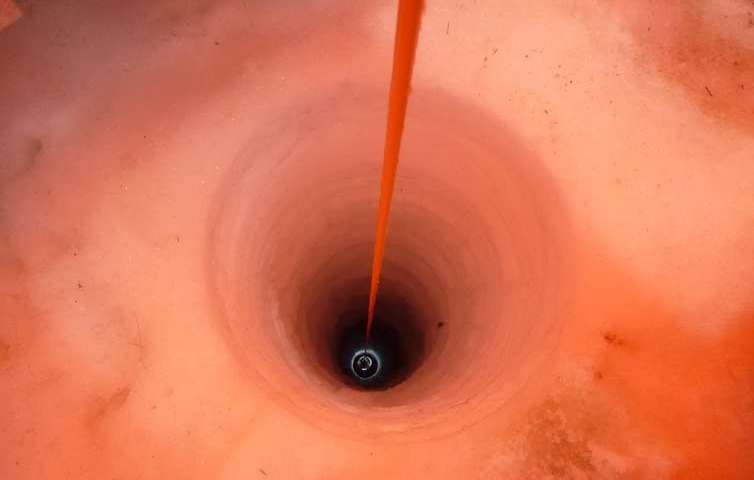Antarctica: World's largest ice sheet the size of Spain has a hidden ocean beneath that is warming
The Ross Ice Shelf, which is roughly the size of Spain and around 1km thick, hides an ocean which is "warming and freshening" in an unexpected way.



The world's largest floating slab of ice, the Ross Ice Shelf in Antarctica, has a hidden ocean underneath it, which according to scientists, has been "warming and freshening" in an unexpected way. A team of multidisciplinary scientists melted a 300-metre-deep bore hole through the heart of the Ross Ice Sheet, which is estimated to be around the size of Spain and around 1km thick, to explore the hidden ocean.
The new research was the work of researchers, including glaciologists, biologists, hot water drillers, seismologists and oceanographers, with the Aotearoa New Zealand Ross Ice Shelf programme. According to the scientists, the water flowing under the Ross Ice Shelf is called a "cold cavity" and its temperature is minus 1.9 degrees centigrade. However, if the water warms, it could "dramatically" alter the future of the Antarctic ice sheet.
Despite the significant role the water under the ice sheet could play in shaping the future of the Ross Ice Shelf and possibly also contribute to rising sea levels, the hidden ocean is "excluded from all present models of future climate", the expedition team wrote in an article in The Conversation. In fact, so far, there has only been one instance of the hidden ocean's measurements recorded, the work of an international team of scientists in the late 1970s.
The scientists set up their base camp in the middle of the slowly yet constantly moving Ross Ice Shelf.
"The ocean is slowly circulating, perhaps renewing every few years. The ice is moving too, at around 1.6 metres each day where we were camped. The whole plate of ice is shifting under its own weight, stretching inexorably toward the ocean fringe of the shelf where it breaks off as sometimes massive icebergs," the researchers wrote in the article. "The floating plate is also bobbing up and down with the daily tides. Things also move vertically through the shelf. When you add it all up, every particle in the shelf is moving."
The research team worked from November to January to melt the bore hole, around 25 centimetres in diameter to drop a camera that would explore the waters of the hidden ocean. The scientists found that compared to the 1970 data, the hidden ocean has been warming, "especially deeper down". The researchers also discovered the presence of ice crystals at the underside of the ice and that the ocean has also become less salty.
"It is not clear if these hidden waters play a significant role in how the world's oceans work, but it is certain that they affect the ice shelf above. The longevity of ice shelves and their buttressing of Antarctica's massive ice sheets is of paramount concern," the researchers wrote.






















